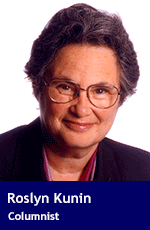 A corner has been turned in the COVID-19 pandemic, even if serious questions linger.
A corner has been turned in the COVID-19 pandemic, even if serious questions linger.
Although we still don’t know how long the pandemic will last, we’re beginning to see more ideas on what the world will look like once we’ve put this behind us. When that will be or how we will get there is still very much up in the air.
But one thing seems certain: doctors (and all the others helping us get through this) will have earned more respect.
Many of us are already cheering on our doctors and medical staff every evening at 7 p.m. when hospital shifts change by going to roofs, balconies and windows and making noise. By blowing horns, banging pots and beating drums, we offer our acknowledgement and appreciation to the doctors, nurses and others who work around the clock to help all of us, but especially those hit by the virus, to live through this.
Hospital beds, ventilators and personal protective equipment (PPE) are all necessary to see us through this plague. And we’re scrambling with limited success to make sure we have sufficient supplies.
However, doctors are more important than equipment.
Even in good times, we don’t have an adequate supply of doctors. That’s evidenced by the long waits in Canada to see specialists and the almost impossible task of finding a family doctor if you don’t already have one.
Now the demand for doctors’ services is soaring with the rising COVID-19 caseload and we’re told we’ve not yet seen the peak.
Our doctors can only be described as heroic as they work shift after shift, day and night, often with insufficient PPE. They put their health and that of their families at risk to try to meet the public’s needs.
Medical schools are graduating classes early to help increase medical staff.
Still, we desperately need more physicians – but we can’t pull them out of thin air.
It’s amazing to realize, especially now, that we’ve always had many fully-qualified doctors in Canada who we don’t allow to work as physicians. Some of these are immigrants, usually invited into Canada because of their medical backgrounds. Others are Canadian citizens who, because of limited space, didn’t get into a Canadian medical school and trained abroad, often in world-class schools in countries like the United States or Britain.
I’m talking about doctors who passed all the exams Canadian medical students take. Some have had experience in pandemics and in dealing with limited supplies – conditions most doctors here aren’t familiar with.
Many can’t practise here only because they haven’t done Canadian residencies and our medical establishment doesn’t take steps either to get them residencies or to waive that requirement.
Canada has always been short of doctors. When I was surveying the country for Immigration Canada, the only related issue anyone was interested in once you were outside the major metropolitan areas was the shortage of doctors. Towns couldn’t exist without a doctor.
Now even major cities like Toronto, Montreal and Vancouver have started to suffer from too few physicians – even before we got hit with this pandemic.
The usual reason offered for not allowing these doctors to practise is that they’re not qualified or don’t have necessary language skills. However, once they’ve passed the same exams as homegrown medical students in an official Canadian language, those arguments don’t hold.
It’s also a spurious argument that we can hold down government health-care costs by limiting the number of care providers. Reducing the cost of providing care by not have the needed services is a very false economy.
The need for more doctors existed a long time before this pandemic. It will continue when the pandemic is over.
There was never any valid reason to not recognizing qualified doctors and to deny them the right to practise. During the most serious health crisis Canada has ever experienced, it’s an unbelievable travesty to not allow these doctors to help us.
What are medical associations and Canada’s provincial governments going to do about this?
Troy Media columnist Roslyn Kunin is a consulting economist and speaker.
The views, opinions and positions expressed by columnists and contributors are the author’s alone. They do not inherently or expressly reflect the views, opinions and/or positions of our publication.


